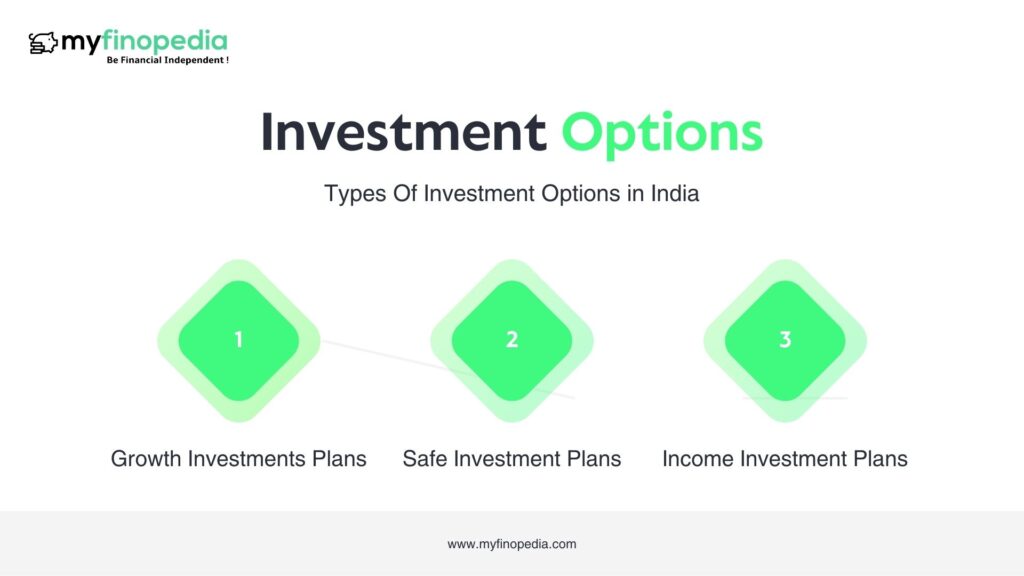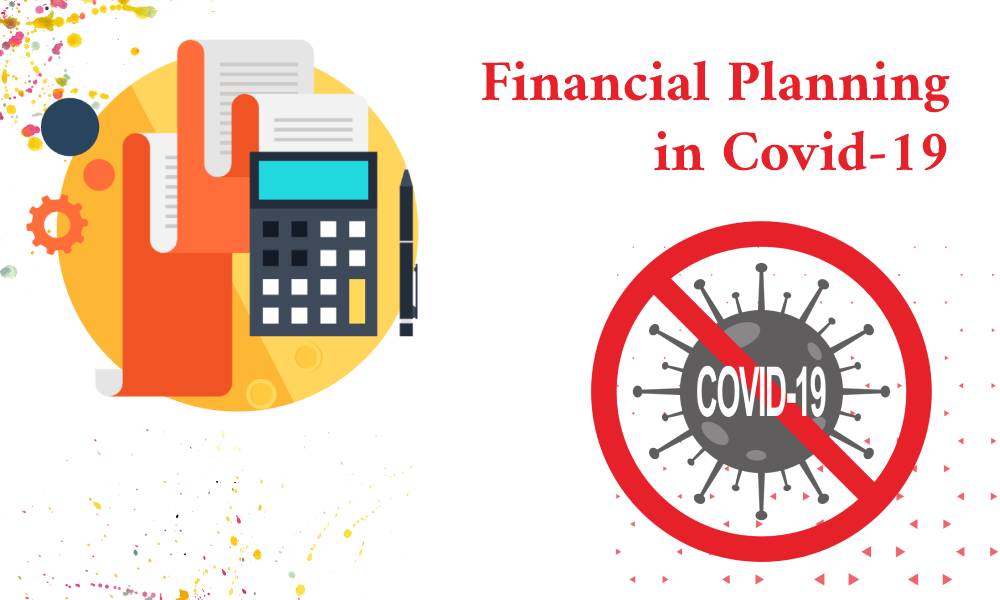Bracing up for your new investment goals in 2023! Then, you have come to the right place. In this article, we have shared the latest investment options that can influence your finance.
We have also considered various factors like investment goals, risk appetite, tax & other benefits that affect your long-term investment decisions. So, let’s start.
Types Of Investment Options in India
Before dig into the investment plans, we have to understand various investment categories under which your investment decisions depend upon. The categories are as follows:-
- Growth Investments Plans: – Equity, Stocks, ULIPs,NPS are some of the examples of growth mutual plans. These investment options are usually long-term, volatile, and have a hard lock-in period.
- Safe Investment Plans: – FDs are one of the examples of safe investment plans, which includes a medium-term investment for keeping your capital safe. Also, it has a lock-in period that does not allow withdrawal for the first few years.
- Income Investment Plans: – SCS schemes, POMIS, and other pension plans usually come under this category. It’s usually a short term low risk investment option that allows monthly or quarterly withdrawal.
Best Investment Options in India in 2023-24
Below are the latest investment options for investors of various risk appetites in India in 2023-2024:-
- Public Provident Funds
One of the flexible and more adaptable investment options is the Public Provident Fund (PPF) schemes. Being a government aided scheme it gives more reliability and low risk in keeping your funds for a long time.
The interest rate ranges from 7.10% p.a. with a minimum deposit starting from Rs. 500. The span of a public fund can extend upto 15 years & premature withdrawals are allowed after the span of 5 years.
- National Pension Scheme (NPS)
The National Pension Scheme is one of the government-backed schemes that offers guarantee of a lump sum amount after retirement. It invests in various stock market folios like debentures, government bonds, and shares. One can open an NPS account with a minimum 500 rupees deposit upto 60 years old.
You can save upto INR 2 Lakh per annum under section 80C and 80CCD under tax policy. NPS interest rates can vary in Tier I and Tier II cities respectively.
- Equity Mutual Funds
Equity mutual funds or bonds can engage high-risk but can return a reasonable amount after a long-term investment. It depends on the market volatility, so one with a high-risk appetite can choose the equity funds for longer benefits.
The minimum investment in these funds is INR 500 with a lock-in period of three years. If you invest in a direct equity, you must have a demat account. You should always buy equities after carefully analyzing the market and returns on various market conditions.
- Bank FDs
Bank fixed deposits are another type of reliable, consistent, and open deposits that provide high returns. Although the percentage of returns is much less than other equity investments, it has gained a lot of popularity through the years for providing an open and easy facility of withdrawals over 7-10 years.
It gives additional interest rates for senior citizens between 0.25-0.75%. It can be cumulative (interest is reinvested and builds a lump sum capital and Non-cumulative (interest paid monthly or quarterly or yearly basis).
- Unit Linked Insurance Plan (ULIP)
Unit Linked Insurance Plan is one of the popular investment options that provides premium options along with insurance policy in its plan. One can invest in ULIP in any bank and get tax benefits upto 1.5 lakh per annum. It uses the interest plan for buying equity and debt funds depending on conditions.
It has a lock-in period of 5 years and without penalty withdrawal of policy. It also falls under the EEE category of tax benefits under section 10D of the Income Tax Act, 1967.
- Gold Exchange-Traded Funds( ETFs)
An investment option involving no hassle of stock market volatility or risk Investments is the gold exchange traded funds. Holding a minimum physical gold of 1 unit or equivalent to a gram can be stored in the funds and the ETF value is determined according to that.
There is no lock-in period and you can exit the ETFs whenever you want. The risk here depends on market demands but usually comprises less risk.
- Real Estate Investments and REITs
Having higher tangible value assets, the real estate segment has always been popular among investors. Through a portfolio of low volatility and high returns, it can get you maximum ROI after a significant amount of time.
Another investment option is Real Estate Investment Trust, which helps in investing in a portfolio engaging income-generating real estate assets by buying the units of REIT. It can change its approach in the stock market due to market volatility just like mutual funds
National Savings Certificate (NSC)
NationalSavings Certificates are one of the low-risk investments backed by the government and are available in various post offices and banks.
The returns of NSC is 7.7% and interest is paid at the end of the maturity period. It’s usually lock-in period is 5 years and a policy holder can save up to 1.5 lakh per annum through section 80C of the Income Tax Act.
Bottom Line
In conclusion, to understand different marketing options where you can keep your savings and get reasonable returns you should keep trying different investment options that can align to your needs. Also, you should always be aware of certain factors which can help you make better decisions through certain experienced personnel in your investment journey, paving you a better path.






